First thing you have to understand is there is no such thing as one perfect “superfood” to turn your diet from unhealthy to healthy. It’s really about the many choices you make every day that add up. Everyone’s body is so different and food affects us individually based on many factors.
Teenagers have a big appetite. It’s important for a teenager to eat nutrient-rich “superfoods” that will fuel their bodies on a well-balanced diet instead of a diet of too much sugar, fat, salt, and processed snacks.
Some of the best foods for a teenager to eat are eggs, dairy, sweet potatoes, beans, seeds, nuts, bananas, berries, and leafy greens such as spinach and kale. Some of the worst foods for a teenager to eat are highly processed snacks, caffeine, sugary drinks, french fries and other fatty foods, potato chips, etc.
Teenagers are growing and require so much more energy and nutrients than adults! I made a list of some of the best and worst foods for teenagers to eat so you can get the best tips from a registered dietitian nutritionist. Keep reading for the best tips to help your teenager’s diet.
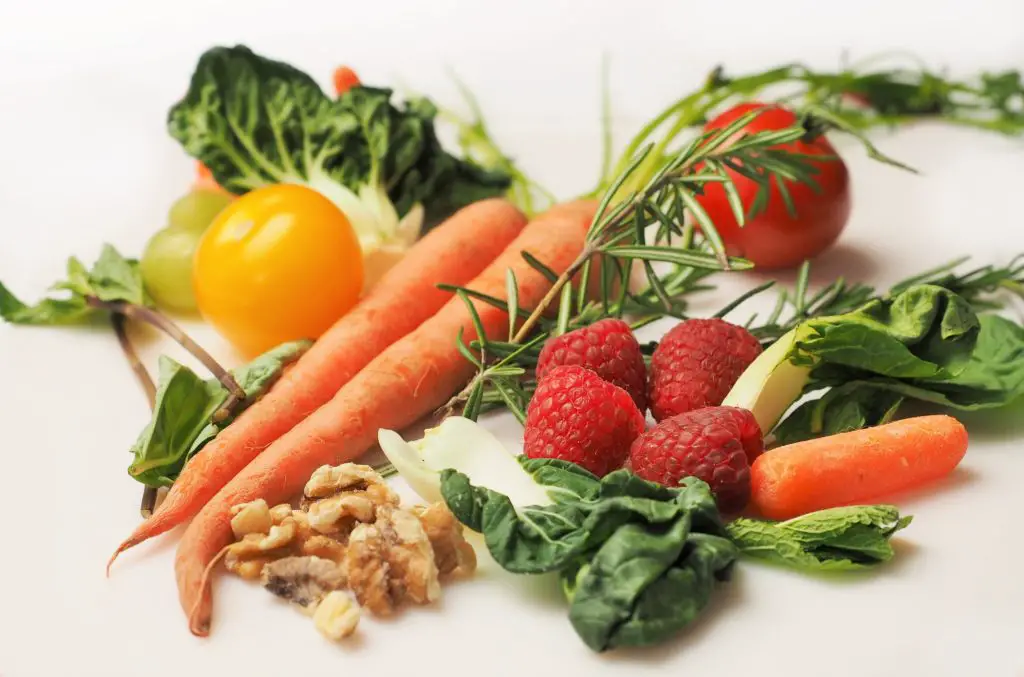
What are the 10 BEST Foods for a Teenager to Eat?
Teens need high levels of vitamins and minerals and other important nutrients and many teens don’t get enough.
Some important nutrients for teenagers to consume in their diets (that many adolescents are lacking) are:
- Calcium – to build strong bones and teeth, muscle contraction, fluid balance, and to help with blood and heart health.
- Iron – to help with blood production and deliver oxygen throughout your body. It is also important for growth and your immune system.
- Potassium – for healthy blood pressure, fluid balance, nerve function, and muscle contraction.
- Fiber – helps your digestive system stay regular, helps you to feel full and satisfied, and promotes heart health.
- Vitamin D – helps with calcium absorption and keeps your bones healthy and muscles strong.
Since many teenagers aren’t getting enough of these nutrients, some of the best foods teenagers can eat are high or good sources of these nutrients.
Top 10 Best Foods for a Teenager:
This list of best foods for teenagers are foods that support a teen’s growth and development, require minimal processing, no harmful ingredients or additives, and are full of important nutrients.
Whole Grain Breads– Choose whole grains because whole grains have so much more nutrition and are more filling than white breads and grain products. Whole grain breads provide healthy carbs, a boost of fiber, and important B vitamins. Other whole grain foods add important energy for your body including brown rice, potatoes, oats, whole-grain pasta, and more.
Fish– Choose fish 2-3 times per week, especially the healthy fatty fish like salmon, tuna, and mackerel. The important fats helps with heart health and brain health, plus you’ll be getting healthy protein. You’ll also be getting iron, calcium, vitamin D, potassium, and more!
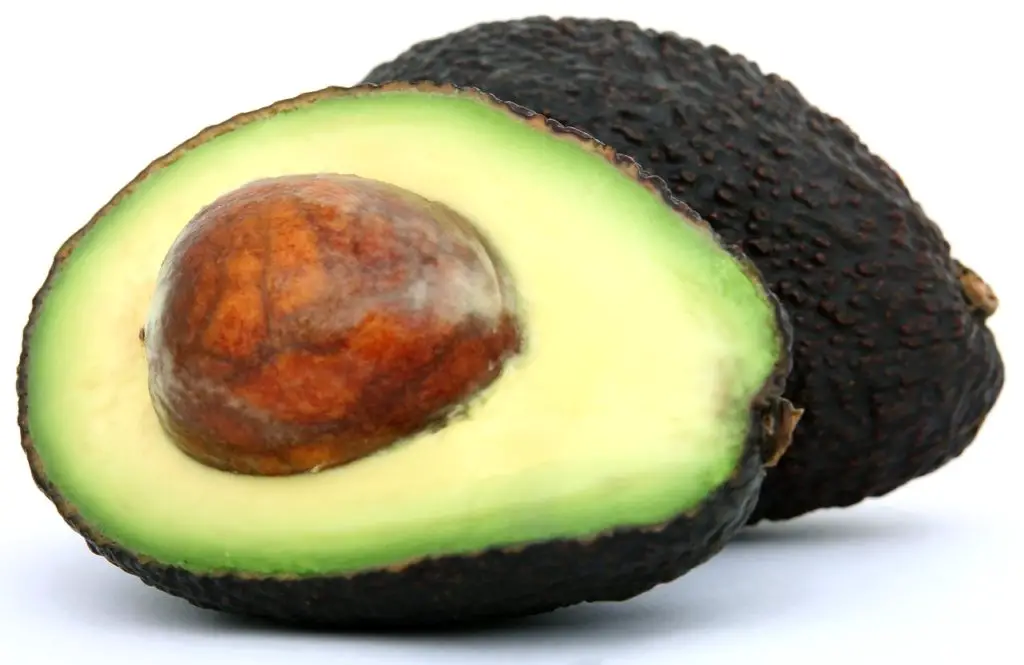
Avocados– Avocados are another source of good fats, plus they taste delicious added to many foods like toast and eggs, burritos, salads, sandwiches, pasta, etc. No wonder these are a favorite food for Millennials and Generation Z! They are also a great source of vitamin C, vitamin E, vitamin K, magnesium, potassium, and other nutrients.
Colorful Vegetables– Some of the best ones are spinach, kale and other leafy greens, broccoli, carrots, squash, purple cabbage, sweet potatoes, peas, lentils, and beans. Choose a variety of colors, textures, and types for many benefits. You’ll be getting vitamin C, potassium, fiber, vitamin A, etc.
Many teenagers say they don’t like vegetables, but show them a list of diverse vegetables and they are likely able to pick at least a few they enjoy or are willing to try. Think outside the box besides just carrots and celery- try snap peas, broccoli, squash, arugula, rainbow carrots, asparagus, artichoke, etc.
Fruits– Again you’ll want to choose a variety of colors, shapes, and types. Fruit can give you tons of benefits! Some of the best ones for teenagers are bananas, berries (even frozen is great), watermelon, oranges, apples, pineapple, pomegranates, grapes, grapefruit, and dried fruit, but any other types of fruit can be beneficial! Fruit provides carbohydrates for energy, fiber, potassium, vitamin C, vitamin A, and important antioxidants. Getting enough fruits should be easy, most people enjoy many types of fruit!
Calcium and Vitamin D foods– These nutrients are so important for growing teens for bone health and more! Some of the best choices are fatty fish, fortified dairy products, orange juice, fortified cereals and grains, eggs, mushrooms, green leafy vegetables, tofu, nuts, and the list goes on. Add some of these healthy choices into your regular diet.
Seeds and nuts– Seeds and nuts provide protein, calcium, zinc, fiber, healthy fats, and important phytochemicals. Try to consume seeds and nuts regularly! Start adding seeds and nuts to many recipes including granola, protein balls, oatmeal, smoothies, salads, muffins, yogurt etc. Try flax seeds, chia seeds, pumpkin seeds, and nuts like walnuts. Even nut butters can be a good choice.
Iron-rich foods– Many teenagers aren’t getting enough iron, especially teenage girls after they’ve started menstruating. Low iron causes feelings of fatigue, low energy, dizziness, light headed-ness, pale skin and nails, weakness, headaches, etc. Sound familiar? Talk to your doctor if your teen shows these signs.
Getting enough iron is important. Foods like red meat, chicken, and turkey contain iron and can be an important source to consume a few times per week. Animal sources of iron are highest absorbed, but plant sources can also be a good choice as well such as beans, tofu, lentils, cashews, dark green leafy vegetables, whole-grains, and enriched products like breads and cereals.
Teenage vegetarians should plan their diets around good sources of protein and iron and may want to consider getting their iron tested at an annual doctor’s checkup each year.
Dairy– Emerging research on dairy is controversial, but I stay up to date on research on both sides and I still recommend dairy as a healthy food choice in appropriate portions. Dairy products are packed with beneficial vitamins and minerals, a serving of milk is loaded with many nutrients teenagers need (and are usually lacking), such as protein, carbohydrates, fat, calcium, potassium, phosphorus, vitamin A, vitamin D (for fortified products), and more. Yogurt is also a great choice for protein and probiotics for gut health!
Personally, I drink lots of milk and it’s a great healthy choice for my diet, the only thing I have to worry about is consuming too much dairy, because too much calcium can decrease iron absorption. Some individuals can be more sensitive, allergic, or choose not to consume dairy products and that’s fine too.
While dairy products are a convenient source of good nutrition, lactose-intolerant, dairy-free, and vegan/vegetarian teens can definitely make up these nutrients in other ways in a well-planned diet. Check out my post Is it OK for Teens to be Dairy-Free?
Eggs– Number 10- eggs! Eggs can also be a controversial food, but most teenagers should be able to eat 1-3 eggs a few times per week as part of a healthy diet with no problems or increased risks. Eggs are nutritional powerhouses full of good nutrients, especially nutrients that teenagers need and are usually lacking.
One egg contains a low amount of calories but provides a high amount of nutrients such as protein, iron, vitamin D, calcium, potassium, zinc, vitamin E, and more. Eggs contain small amounts of almost every vitamin/mineral needed by the body. And for an added bonus, eggs are also easy for a teenager to cook by themselves!
It’s your choice if you want to eat egg whites or the whole egg. The egg white contains more protein and less calories, but the egg yolk contains most of the nutrition.
Check out my post: How Many Eggs Can A Teenager Eat Per Day? for more tips.
Other good choices:
- Garlic and onions – can promote a healthy diet and decrease some health risks.
- Iron-fortified cereal – I know breakfast cereal can be a bit questionable and isn’t always the best choice, but if a teenager is going to eat processed snack foods anyway, breakfast cereal might be “less” bad choice. Many cereals are fortified with important nutrients so they are like a chew-able supplement. Choose a cereal that is made with whole grains, fortified with vitamins and minerals, and has less than 10 grams of added sugar per serving.
- Poultry and meats– not only do these meats offer important protein sources, they also provide iron.
- Water- not technically a food, but water is an important choice! Drinking enough water can help teens not only with hydration, but feelings of fullness, weight control, more energy, better concentration, less stress, skin health, better digestion, healthy kidneys, and much more. It’s common for teenagers to carry around water bottles, so find your favorite bottle and get drinking!
- What else would you add to this list? Let me know! There’s many great choices, it’s hard to only pick a few!
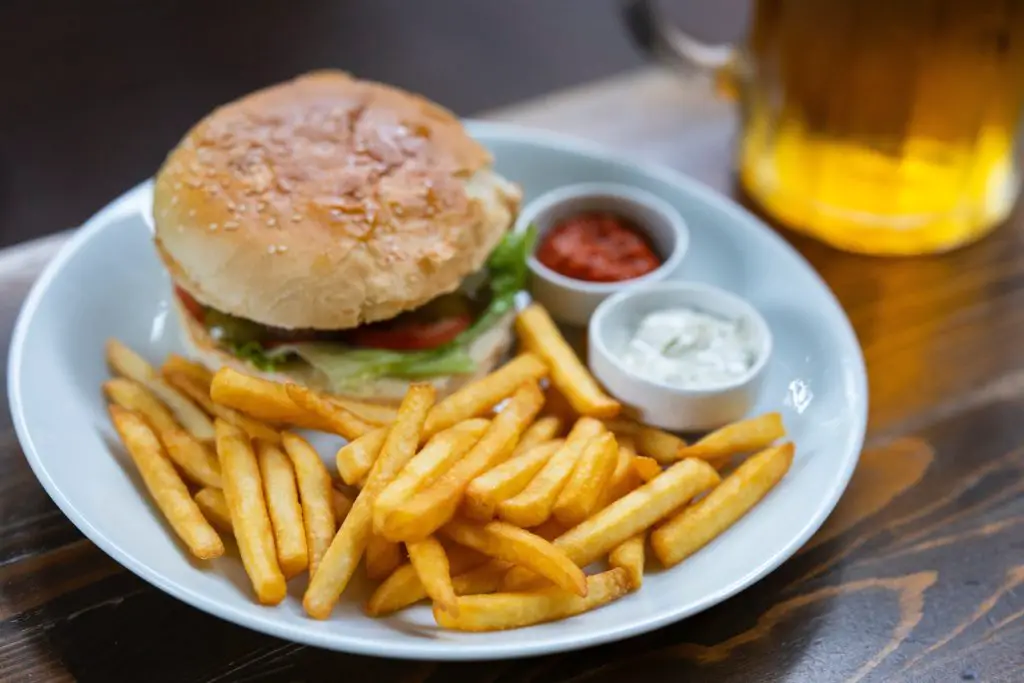
Check out my meal plans for more tips:
- The Best Meal Plan for Teenage Athletes- From a Registered Dietitian Nutritionist
- Meal Plan for Teenage Basketball Athletes
- Free Meal Plan for High School Football Players
- FREE Downloadable Meal Plan for Teen Soccer (Football) Players
What are the 10 WORST Foods for a Teenager to Eat?
A lot of the foods that taste good to teenagers, aren’t good for their bodies, and don’t actually make them feel good in the long run. Here’s a list of popular foods teenagers enjoy but should actually avoid:
Fried and Fatty Meats– Meats like bacon, ribs, hot dogs, burgers, fried chicken, and even chicken nuggets and pepperoni are full of unhealthy fat and calories and shouldn’t be consumed regularly.
Instead of fried, fatty meats, choose baked and lean meats like chicken, turkey, lean beef, and even fish. It’s okay to have fatty or fried meats occasionally, but stay within a balanced portion size and choose other healthy sides at your meal.
Soda– Soda is technically a beverage, not a food, but it’s still one of the worst things for a teenager to get addicted to. The high sugar content (or artificial sweetener content) is not good for a growing teenager. The recommended amount of added sugar for a teenager is 25 grams per day, about 6 teaspoons.
A typical 12 oz can of soda has about 39 grams, that’s already too much sugar for the day. If your teen doesn’t like drinking plain water all day, try flavoring it with fruit slices, cucumber slices, or other spices and seasonings.
Sugary Drinks- Other sugary drinks besides soda can add a lot of sugar and calories to a teenager’s diet that aren’t necessary. It is better to eat your calories than to drink them. Popular drinks that should be limited are fruit-flavored beverages (many fruit flavored beverages are mostly sugar and artificial flavors with less than 10% juice), energy drinks and sports drinks, juices, etc. 100% juice isn’t a bad choice, but it’s better to be eating the whole fruit to get dietary fiber. Teenagers should limit juice to 8 oz a few times per week.
Caffeine– Caffeine is a stimulant that isn’t even a great choice for many adults, but especially shouldn’t be used for kids or teenagers. Caffeine decreases calcium absorption, and as a stimulant it can cause problems for teenagers such as sleep problems and trouble paying attention in school.
Too Much Coffee or Tea– It isn’t a great idea for teenagers to become addicted to coffee and tea. It has caffeine, limits iron absorption, and certain sweetened types can have too much sugar, plus some coffee drinks are extremely high in calories and not doing you any favors nutritionally. If you need a sweet or energizing drink in the morning or during the day, switch to 100% orange juice or a fruit and veggie smoothie.
French Fries– Fast food options are sure convenient at times, but they aren’t providing many good nutrients for a growing and developing teenager. French fries are fatty and salty and too high in calories, not a good combination when you need a balanced diet. Try to switch for a side salad or fruit when available.
Potato Chips– Chips are a popular teenage snack, but can be too high in calories, fat, and salt. Choose instead to fuel up with whole grains like whole-wheat breads and pasta, or snacks like hummus and veggies with whole grain crackers. Even popcorn can be a good choice if it doesn’t have too much butter and salt, try some other flavorings for a better balance.
Highly processed snacks and other “junk” foods– Think Oreos, Cheetos, Pop tarts, packaged cookies and cakes, chips, sugary breakfast cereals, granola bars, candy bars, sugary candies, vending machine foods, etc. These foods aren’t offering any good nutrition and can quickly fill up a teenager’s diet and take the place of better foods that provide fuel and better nutrients, and could leave teenagers deficient in some crucial nutrients.
Boxed Macaroni and Ramen Noodles– These aren’t necessarily the worst foods, because they aren’t all full of bad ingredients, but they aren’t full of many good ingredients either and they are a popular staple for teenagers, especially because these packaged meals are cheap and easy for a teenager to prepare by themselves.
Macaroni and Ramen noodles are also high-processed and don’t contain much of any good nutrients, you aren’t doing yourself any favors by consuming these regularly. Add lots of veggies and a protein, or make a homemade macaroni or pasta dish instead.
White Bread- Sorry if you like white breads, white breads are made from refined wheat and they are low in fiber and nutrients. White breads offer little nutritional value, poor energy, and rapid spikes in blood sugar. Instead choose whole grain breads, pastas, tortillas, crackers, cereals, etc.
Other Foods Teenagers should Limit:
- Sugary breakfast cereals
- Pastries, cookies, cakes
- Sweetened yogurts- some lowfat yogurts have a lot of sugar!
- “Diet Foods” such as low-carb and gluten free products may seem healthy but often tend to have a lot of added fat and sugar to make up for other missing ingredients
- Ice cream– sorry, ice cream is loaded with sugar and fat
- Most fast food meals
- High mercury fish– high levels of mercury can be harmful for teenagers and children. High mercury fish includes king mackerel, marlin, shark, swordfish, and some of the more expensive cuts of tuna. These shouldn’t necessary be avoided, just limited in appropriate servings of about 3-4 oz. Most teenagers aren’t eating high levels of seafood anyway, so this shouldn’t be an issue for most adolescents
Teenagers shouldn’t stress too much about food, that can lead to unhealthy eating patterns or even eating disorders. Don’t worry about calorie counting, skipping meals, or going on restrictive diets.
Instead it’s important to learn how much food you need, read nutrition labels, get some physical activity, and not restrict food. Any food can be enjoyed in moderation as part of a well-balanced diet.
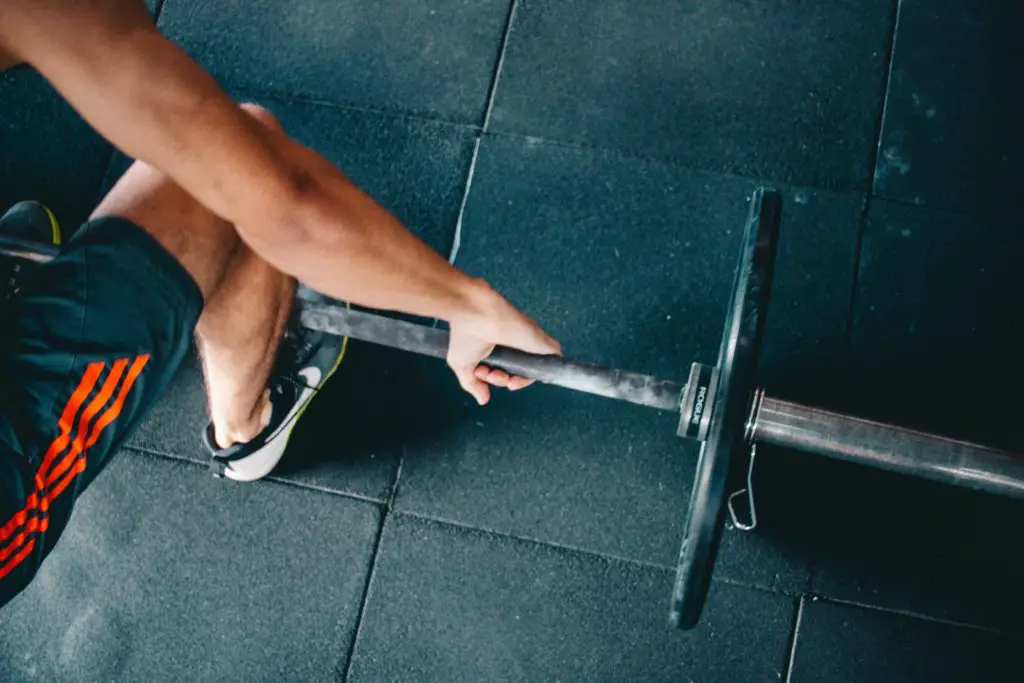
What Foods Help A Teenager to Grow?
Teenagers should focus on a balanced diet of whole grains, fruits, vegetables, low fat dairy, and protein foods. Teenagers need a lot more nutrients than adults because their bodies are growing and developing.
You may have heard the phrase that if you “eat your vegetables you’ll grow taller”, but there’s more to it than that. Teenagers definitely need nutrients from vegetables to grow, but they also need plenty of protein, healthy carbohydrates, good fats, etc.
The best thing a teenager can do to support healthy growth is to eat a variety of foods during the day to energize and fuel all parts of their body. In a typical day teenagers should be eating servings from each of the main food groups:
- Dairy– Choose 2-3 servings per day. A serving size is about 1 cup. Choose low-fat dairy products (skim or 1% fat) of milk, yogurt, cheese, cottage cheese, etc. Fortified dairy alternatives are also appropriate. Dairy products provide protein, calcium, fat, vitamin A and D, and many other important vitamins and minerals for a healthy teenage diet to support growth, puberty, development, brain function, etc.
- Grains and Starchy foods– Choose 6-8 servings per day. A serving is equal to 1 slice of bread, 1/2 cup of cooked grains, etc. Choose whole wheat breads/pasta/crackers, sweet potatoes, oats, brown rice, quinoa etc. Whole grains provide important energy for your muscles and brain and provide vitamins and minerals for your body to function properly.
- Fruits and Vegetables– Choose 5 or more servings per day. A serving size is about the size of your fist or 1 cup. Choose a variety of colors, types, flavors, and textures. Try some seasonal and local varieties. Nutrients from fruits and vegetables help develop healthy organs such as your heart and brain, support energy metabolism, and more.
- Protein foods– Choose 4-7 servings per day. A serving is equal to 1 ounce of cooked meat, 1 egg, 1/4 cup cooked beans, 1 Tablespoon of peanut butter, or 1/2 ounce nuts or seeds. Protein helps with muscle and tissue growth and many other body processes.
What Should a Teenager Eat for Breakfast?
Some of the best breakfast meals for teenagers combine healthy carbohydrates, protein, and good fats, as well as other vitamins and minerals. A good breakfast for a teenager should be between 400-800 calories depending on their calorie needs and goals.
Here are some of the best breakfast ideas for teens:
- Avocado toast with eggs
- Egg scramble with veggies, meat, and cheese
- Fruit and vegetable smoothie with a bran muffin and nut butter
- Oatmeal with berries, nut butter, and seeds
- Greek yogurt parfait with berries or bananas and some granola
- Whole grain cereal with milk or lowfat yogurt and fruit or a hard-boiled egg
- Protein pancakes or waffles with nut butter, applesauce, or fruit
- Breakfast burritos with eggs, spinach, veggies, cheese, and lean meat
See also: What Should Teenagers Eat for Breakfast? and How Do I Get My Teen To Eat Breakfast?
What Should a Teenager Eat for Lunch?
Lunch comes at an important part of the day as a time to re-fuel, re-hydrate, and re-energize the body, especially during a school day. Try to pack a lunch for the day if you can, eat healthy leftovers, a sandwich, or something that makes you feel good. Choose a vegetable, protein, and some carbohydrates such as whole grain breads or fruit. Lunch for a teenager should be around 400-800 calories.
Here are some of the best lunch ideas for teens:
- Wraps made with chicken or turkey, veggies, pinto beans, spinach, cheese, and hummus or a lowfat dressing
- Whole-wheat pasta with turkey meatballs, veggies, and marinara sauce
- Pita bread with a lean protein, hummus or tzatziki sauce, and cut up veggies (cucumbers, tomatoes, bell peppers, zucchini squash, sprouts, asparagus, leafy greens, etc.)
- Chicken salad sandwich on a whole wheat bun with celery and grapes
- Rice bowl with chicken or shrimp, brown rice, leafy greens, beans, diced tomatoes and veggies, avocados, and dressing
- Hummus dip with pita bread wedges and cut up celery, carrots, snap peas, and other veggies
- Coconut rice with mixed veggies and hummus or roasted chickpeas
- Peanut butter and jelly sandwich with fruit and veggies on the side. Try using natural peanut butter and even fruit slices instead of jam.
- Whole grain bagel sandwich with chicken, cheese, chipotle sauce, and other favorite veggie toppings like avocado, spinach, pickles, tomatoes, etc.
- Thin-crust veggie pizza
- Salad with leafy greens, your favorite proteins, and lots of veggies, plus nuts or seeds and dressing. Pair it with breadsticks or crackers.
Be sure to pair your meals with fruit and veggies (dip is okay in moderation!) and plenty of water, some lowfat milk, or a small amount of 100% juice. You can even enjoy a small treat like a medium-sized cookie if you’d like.
What Should a Teenager Eat for School Lunch?
Many students depend on school lunches to meet their nutritional needs. School lunches are designed to give the average student proper nutrition, however they aren’t always the tastiest or the healthiest choices your teen can make.
If school lunch is the best option for your teen, then look at he menu beforehand and encourage your teen to limit the fatty and fried foods like pizza, fries, and burgers, and to choose healthier options and to fill up on a side vegetable and fruit.
What Should a Teenager Eat for Dinner?
Dinner for a teenager should be focused on key nutrients like protein, carbohydrates, healthy fats, and fiber. Dinner should be around 500-800 calories, depending on the teenager’s needs and activity level. Always strive to eat dinner at home with the family. Dinner should be prepared by the parents with help from the teenager when possible.
Here are some of the best dinner ideas for teens:
- Many of the lunch ideas can be used for dinner and taken as leftovers for lunch! It’s great when you don’t have to prepare 3 new meals per day, that is the benefit of meal prepping and preparing extra food for dinners.
- Vegetable and bean chili with a side salad and corn bread
- Grilled fish filet with broccoli, steamed rice, and peaches
- Taco salad with lots of veggie toppings
- Chicken, baked or roasted sweet potato, black beans, and veggies
- Turkey burger and steamed mixed veggies
- Whole wheat pasta with sauce, meat, and veggies
- More ideas? What else do you like for healthy, delicious, filling dinners? Brainstorm some of your favorites!
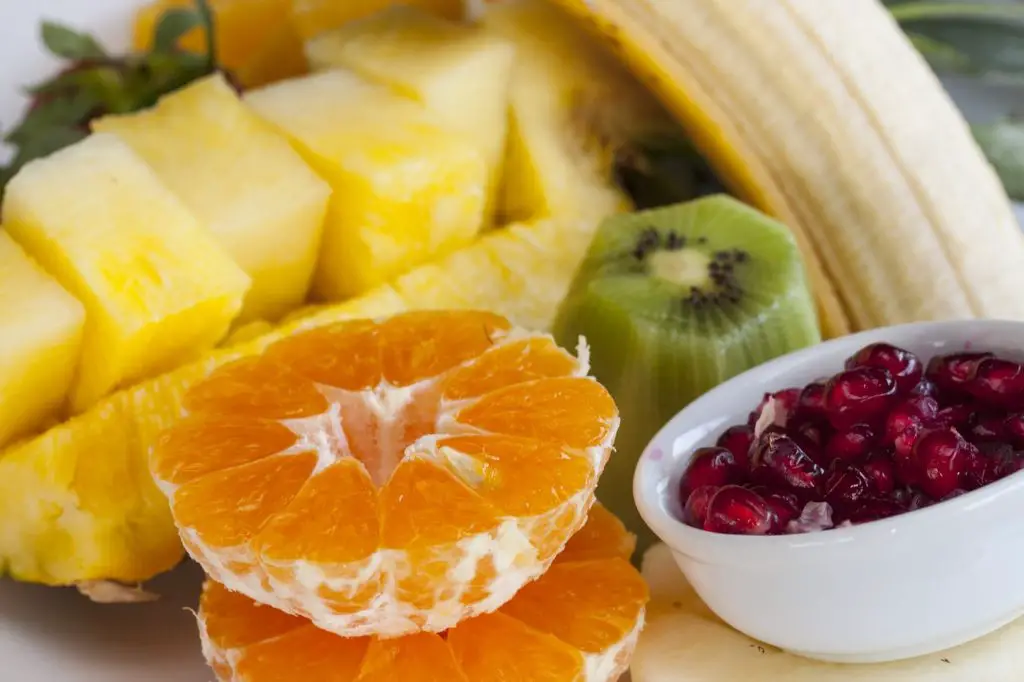
What are the Best Snacks for a Teenager?
Snacks shouldn’t be unhealthy treats each time, they should be mini-meals that fuel your body. They should be purposefully planned throughout the day. Most teenagers need to eat every 3-4 hours, either a meal or a snack, that might equal 3 meals and 1-3 snacks per day depending on needs and activity level (teen athletes will probably 1-2 extra snacks per day).
Snacks should be offered 1-2 hours before meals and should be about 100-300 calories. Plan snacks around protein, healthy carbohydrates, and fiber.
Here are some of the best snack ideas for teens:
- Hummus with whole wheat crackers and veggies
- Protein shake or smoothie
- Whole grain cereal and banana slices and milk
- Greek yogurt with fruit and granola
- String cheese and crackers
- Trail mix
- Apple with peanut butter
- Cottage cheese and fruit
- Almonds and an apple
- Banana or apple with 1 T peanut butter
- Pretzels and 1 T peanut butter
- PB&J sandwich
- Energy bar such as a LARABAR
- 1 cup 100% juice and 2 hard-boiled eggs
- Rice cake with 1 T nut butter and banana slices
- String cheese and 4 oz applesauce
- Check out my pre-workout snacks post for more ideas that can be helpful for teen athletes and regular teens
How Many Snacks Should a Teenager Eat Every Day?
Like previously mentioned, most teenagers need between 1-3 snacks per day, depending on energy needs and physical activity levels. Teenagers should eat every 3-4 hours throughout the day.
Snacks should be around 100-300 calories each. Teen athletes likely need additional snacks such as pre-workout and post-workout snacks to fuel and refuel their bodies during physical activity.
Check out my meal plan for teenage athletes for tips for active teens.
Summary
This post isn’t written to alert you of “off-limits” or “diet” foods for teenagers to focus on and stress about, instead it’s to give you an idea of healthy eating habits for teenagers. No foods should be restricted or banned, that mindset could possibly lead to unhealthy relationship with food longterm. Instead a better balance of foods with the “sometimes” foods included occasionally is best for a growing teenager.
All foods can still be enjoyed in better, more appropriate quantities. It’s important to note that everyone is different and these recommendations are for general healthy teens. Talk to your doctor and a dietitian nutritionist for specific recommendations that work best for your teen.
Related Questions
What Should a Teen Athlete’s Diet Consist of? Some of the best foods for teen athletes are focused on healthy carbohydrates, lean proteins, veggies, and more. Check out my posts: Best Meal Plan for Teenage Athletes and Best Fruits for Teenage Athletes
See Also
- Free Meal Plan for High School Football Athletes
- Sugar-Free Kids? The Problem With Artificial Sweeteners for Children and Teens
- How Much Sugar Should a 14 Year-Old Have Per Day?
- What is the Best Diet Plan for a 15 Year-Old?
- How Much Should a 16 Year-Old Teen Eat?
- Is Whey Protein Safe for Teenage Athletes?
- Are Homemade Cookies Healthier For You Than Store-Bought?
References
https://www.choosemyplate.gov/eathealthy/vegetables/vegetables-tips
https://www.eatright.org/health/wellness/preventing-illness/iron-deficiency
Written by Katherine Harmer, RDN
Fueling Teens is a participant in the Amazon Services LLC Associates Program, an affiliate advertising program designed to provide a means for sites to earn advertising fees by advertising and linking to Amazon.com. We also participate in other affiliate programs which compensate us for referring traffic.
